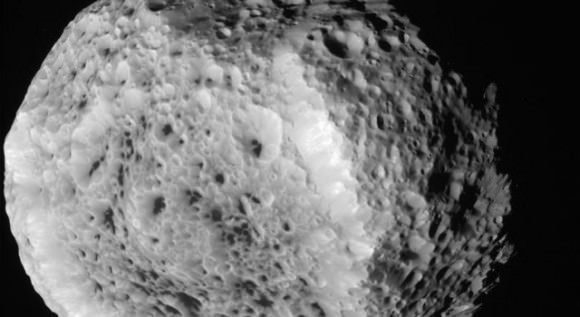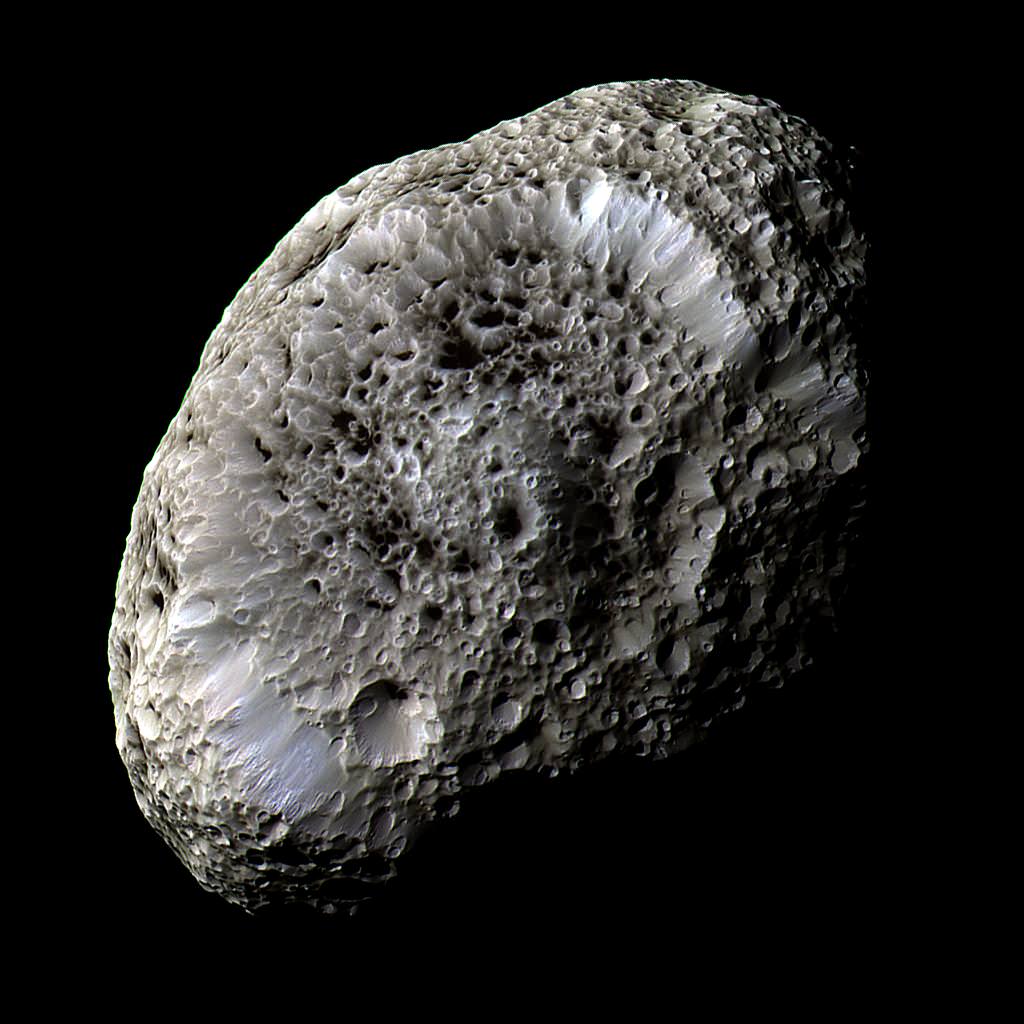Ever taken a balloon and rubbed it against your hair? That’s an example of electrostatic charging, which you see as the balloon briefly attracts strands of hair against your head. Turns out a similar process is taking place on Saturn’s moon Hyperion. More astounding, it wasn’t until recently that scientists saw a curious effect on the Cassini spacecraft in 2005.
As the machine whizzed by the small moon, Cassini was blanketed in electrons from Hyperion’s electrostatically charged surface. It’s the first time scientists have seen static electricity in effect on any airless body outside of the Moon.
The charge comes partly from massive Saturn’s magnetic field, which hits Hyperion’s spongy surface constantly with electrons and ions. The Sun also plays a role, sending ultraviolet light that also strikes the moon’s surface. Scientists found out this happens while studying old data on the Cassini spacecraft, when they discovered “something unexpected” during a close flyby of Hyperion in September 2005.

Specifically, the spacecraft — which is still in operation today — was briefly connected through magnetism to Hyperion’s surface, receiving a surge of electrons. Cassini emerged from the encounter unharmed, even though team members estimate that it received the equivalent of a 200-volt shock from the moon. Charging events can hurt spacecraft, making this a valuable thing to know about for future missions.
“Our observations show that this is also an important effect at outer planet moons and that we need to take this into account when studying how these moons interact with their environment,” stated Geraint Jones of Mullard Space Science Laboratory (MSSL), University College London. He is a member of the Cassini Plasma Spectrometer (CAPS) team and one of the study’s supervisors.
CAPS is not in operation any more, since the instrument was turned off due to drawing excess current in 2012. But perhaps some of its past data, and observations from other Cassini instruments, can help unveil evidence of charging on other moons.

Previous research concerning some of Saturn’s moons, and the asteroid Eros, suggests that charged dust can move across the surface and perhaps even be able to sail into space against the force of gravity.
Several other instruments were used to gather data for this analysis, including Cassini’s magnetometer, magnetospheric imaging instrument, and radio and plasma wave science instrument.
You can read more about the research, which was led by Tom Nordheim, an MSSL doctoral candidate, in Geophysical Research Letters.
Source: NASA


Strange, Wikipedia doesn’t mention Eros in the http://en.wikipedia.org/wiki/Moons_of_Saturn page nor in http://en.wikipedia.org/wiki/Eros_%28disambiguation%29
I wonder why…